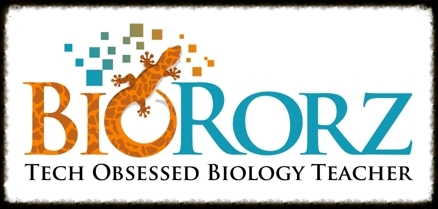Problem Finders: Tweaking KWL for the 21st Century
Hypertrichosis, the werewolf disease.
In my last post, I shared the new and improved version of the KWL graphic organizer, and how I tweaked this version for the purpose of my biology class. I am in the middle of my genetics unit at the moment, and I was trying to come up with the best way to teach about transmission of genes. Traditionally I would give the students a set of problems that requires them to recognize the connection between alleles, traits, and their mode of inheritance (dominant, recessive, codominant, sex-linked etc.) and then they would solve probability problems using Punnett squares and pedigrees. However, I decided to challenge myself to find a more engaging approach that required students to question and think critically about the problems. This is when I discovered this fantastic resource, a seemingly endless list of case studies that are nothing if not perplexing. One great example of this is the Blue People of Kentucky. It has all of the marks of perplexity that Dan Meyer speaks of, so I decided to turn my students into genetics detectives.
Since this is an IB biology course, there is specific content that students are responsible for learning like sex-linked inheritance in hemophilia, multiple alleles with blood types, codominance in sickle cell anemia etc. I selected five case studies for the students to investigate and began with the classic inbreeding royals example of hemophilia.
A fabulously outspoken student that just arrived at ASB last year took one look at the first case and said, "Not this again! This is only like the third time that I have studied this!" O-U-C-H! Fortunately, the werewolf and the rest were new and interesting to him, but he brought up a really great point. One that I had already been thinking about after watching Ewan McIntosh's TEDxLondon talk a couple of nights before.
You see though my intentions were to engage my students by providing them with authentic problems that were somewhat messy and difficult to solve unlike the classic problem sets, I DEFINED the problems for them which were indirectly DEFINED for me by IBO. As Ewan states in his blog post, "Currently, the world’s education systems are crazy about problem-based learning, but they’re obsessed with the wrong bit of it. While everyone looks at how we could help young people become better problem-solvers, we’re not thinking how we could create a generation of problem finders."
He proposes a model in which 20 to 30 global themes are presented and discussed and then the students began to gather information within and beyond the walls of the classroom and come up with problems that they would like to tackle head on. This story ends with a prototype instead of a wiki. I have actually informally proposed this course several times over the past two years. Here is my vision:
It starts with the book, High Noon: 20 Global Problems, 20 Years to Solve Them. Students discuss the different global issues and then bring them down to a tangible local level. Allow them to create interest-based teams of problem solvers and then mentor them through their research and prototyping. With this course, students will begin to impact their world right now. The graphic organizer for their course? PKWHLAEN (I know, this is getting ridiculous. It's time to abandon the acronym).
P: What problem in my local community ignites my passion to the point of action?
K: What do I know about the variables that are affected by this problems or are contributing to its existence? This would involve not only academic research, but also data collection from authentic sources and an evaluation of the problem in an authentic setting.
W: What do I want to resolve about this situation? What resources, including experts in the field and project participants, will I need?
H: How do I find out the information that I need to create a prototype that will attempt to solve this problem? How do I contact the people whose expertise and talents will help to make my project a reality?
L: What have I learned through my research? Can my idea become a reality or do I need to go back a few steps and change my plan?
A: What actions do I need to take to turn my ideas into a reality? PROTOTYPE.
E: Evaluate the prototype.
N: What are the next steps? Do I go back to the drawing board? Do I share out my ideas and expand my protocol to other communities? Do I build on what I have already done and tackle another face of the larger global issue?
In the middle of Christmas vacation, I received an urgent message from two students. They wanted to call me to discuss a project idea that they had that would help bring clean drinking water to the slums of Mumbai. They have now been doing independent research outside of school for the past three months. Their idea has morphed from clean drinking water to designing a device that could help control the pollutants released into the air when people are burning trash. A few weeks ago, they showed up after school to check out how the exhaust system works on the fume hood in my classroom.
It sounds like I might have two problem finders who would make great candidates for this course. I guess I just need to go ahead and make my proposal official.
If you want to know more about Ewan's problem finder's mission, check out his lab!


